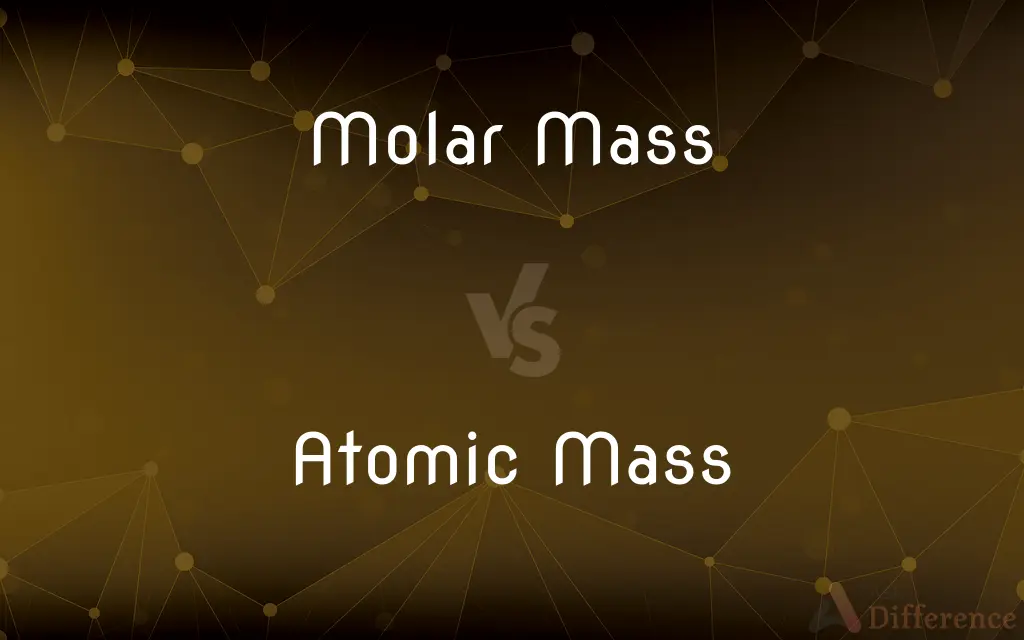In the realm of chemistry, the terms “atomic mass” and “molar mass” are often employed interchangeably by students and enthusiasts alike, yet they encapsulate distinct concepts crucial for a thorough understanding of chemical composition and stoichiometry. This exploration endeavors to clarify the relationships, nuances, and implications of these two foundational terms, aiding learners in not only grasping their definitions but also understanding their applications in practical chemistry.
To unravel the intricacies of atomic mass and molar mass, one must first embark on a journey of definitions. Atomic mass, commonly expressed in atomic mass units (amu), refers to the weighted average mass of an atom of a given element, reflecting the isotopic composition of that element as found naturally. This measure indicates how heavy an individual atom is relative to other atoms, providing insights into its nuclear structure and the interplay of protons and neutrons within the nucleus.
In contrast, molar mass is defined as the mass of one mole of a substance, usually expressed in grams per mole (g/mol). The mole—a fundamental concept in chemistry—serves as a bridge that connects the microscopic realm of atoms and molecules to the macroscopic world we observe. By convention, the molar mass of an element is numerically equal to its atomic mass but expressed in different units. This correlation prompts an inquiry: are atomic mass and molar mass, indeed, two sides of the same coin?
The answer, while seemingly straightforward, unfolds a complex narrative about the nature of these measurements. For elements, the numerical value of atomic mass, when taken in grams, is equivalent to its molar mass. For instance, an element with an atomic mass of approximately 12 amu, such as carbon, will have a molar mass of 12 g/mol. This relationship is underpinned by Avogadro’s number, approximately (6.022 times 10^{23}), which quantifies the number of atoms in one mole of substance, thereby linking micro-scale atomic mass to macro-scale molar mass.
Yet, despite this numerical harmony, the implications and applications of these two concepts are distinctly divergent. Atomic mass provides insights into atomic structure and behavior, facilitating a deeper understanding of chemical bonding and electron arrangement. Conversely, molar mass is essential for stoichiometry, allowing chemists to perform calculations involving reactions, concentrations, and the quantities of substances moving in and out of reaction systems. Recognizing this multifaceted relationship offers an enhanced perspective on the importance of precision in scientific discourse. Understanding the fine distinctions between atomic and molar mass is indispensable for chemists who routinely engage in quantitative analyses.
Moreover, when considering isotopes, the conversation becomes more convoluted. Elements may possess several isotopes, each exhibiting a different atomic mass due to variations in neutron count. For example, carbon-12 (with 6 neutrons) and carbon-14 (with 8 neutrons) have distinct atomic masses yet contribute to the average atomic mass that is listed on the periodic table. Therefore, while the molar mass reflects the isotopic composition of naturally occurring elements, practitioners must remain cognizant of these variations, particularly in advanced fields such as nuclear chemistry and radiocarbon dating.
The implications extend further into laboratory practice. When preparing compounds or conducting titrations, the distinction between atomic mass and molar mass becomes paramount. Chemists rely on molar mass to calculate the amount of a reactant required to obtain a specific yield of product. Misconceptions regarding these two measurements can lead to erroneous calculations, potentially resulting in failed experiments or unsafe reactions. Thus, fostering a profound understanding of both terms is critical in ensuring scientific accuracy and innovation.
Furthermore, the evolving landscape of scientific research often necessitates a reconsideration of these term usages in applied contexts. Environmental chemistry, pharmacology, and material science, to name a few domains, increasingly depend on precise molar measurements to devise new materials or analyze complex reactions. Herein lies the promise of a shift in perspective: recognizing that atomic mass and molar mass, while closely linked, serve unique roles across various scientific disciplines can ignite curiosity and drive engagement among both students and seasoned professionals alike. Cultivating such awareness not only emphasizes the richness of chemistry but also builds the analytical proficiency necessary to excel in the field.
In conclusion, the inquiry into whether atomic mass is the same as molar mass for elements unveils profound insights into the nature of chemical measurements. While these terms share numerical equivalence for pure elements, their implications diverge significantly in practice and application. A comprehensive understanding of both concepts is essential for anyone seeking to navigate the complexities of chemistry. Armed with this knowledge, aspiring scientists are better equipped to initiate their explorations into the intricate tapestry of matter, where precision, curiosity, and analytical reasoning are of utmost importance.












